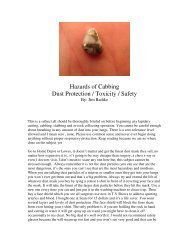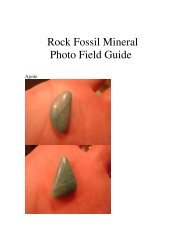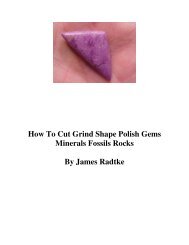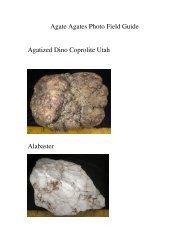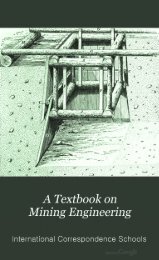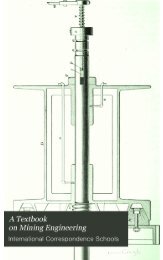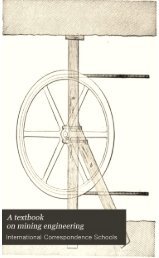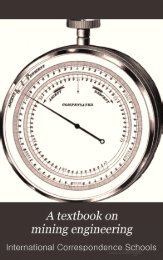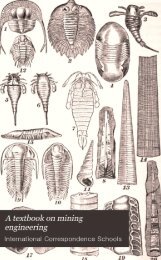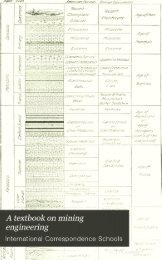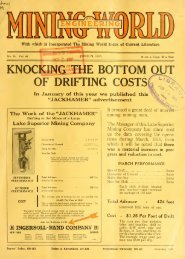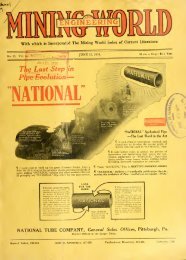You also want an ePaper? Increase the reach of your titles
YUMPU automatically turns print PDFs into web optimized ePapers that Google loves.
'<br />
FOR GOLD. 15<br />
lengths of boxes, made as follows : the bottom of the<br />
box is covered with a false bottom<br />
of blocks (a) four inches<br />
high, cut off the end of a<br />
square log. These blocks must<br />
be one inch less in width than<br />
the boxes, and when fixed in<br />
the box, must have a space of<br />
half an inch between each<br />
block, and the same between<br />
the blocks and the sides of<br />
the box. A piece of board<br />
wedged between the blocks<br />
and the sides, and nailed,<br />
keep the blocks from moving.<br />
The corners of the blocks,<br />
about three inches, are cut off",<br />
leaving triangular spaces at<br />
the sides of the box. These<br />
boxes will be found to save<br />
the finest gold, and there arc<br />
many companies using them,<br />
who believe they are as efficacious<br />
as quicksilver in saving<br />
fine gold.<br />
In a sluice, most of the<br />
gold should be caught in the<br />
first three or four rifiles,<br />
and when quicksilver is used<br />
instead of the boxes, Avith block bottoms, it IS<br />
used as follows : when the sluice has been worked an<br />
hour or so, sand, etc., will be found lodged against the<br />
liivo. \^oiniiieiiv,iii^ at tiic; luurtii riiiiu, vou lay on<br />
the top of the sand, a shallow bed of quicksilver the<br />
whole widtL of the box. Three or fourriflSes serveil in




